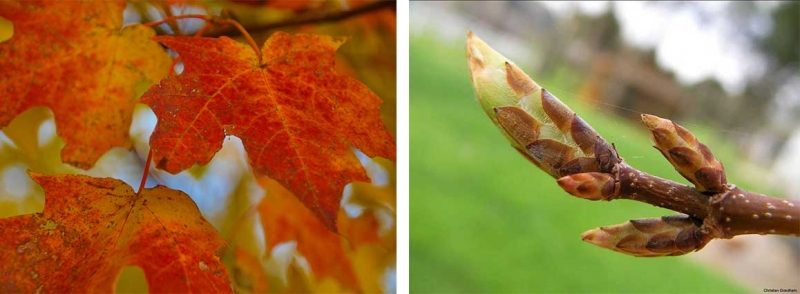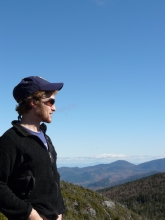
Sugar Maple Monitoring
Few trees are as quintessential to our North Country character as the sugar maple. They are vital to our forests, providing habitat for many other species. In the fall we watch in admiration as sugar maple crowns turn to brilliant shades of yellow, orange, and red. Maple wood is sought after by homebuilders and craftsmen for its toughness and the beauty of its grain. In the springtime we tap them for maple syrup, a pillar of the local agricultural economy, with tremendous potential for growth. Year-round, we pour maple syrup over steaming stacks of pancakes. For these reasons and more (but maybe mostly for the pancakes) the sugar maple is honored as New York’s state tree.

But as it turns out, it’s not always easy being a sugar maple. Sugar maples in our yards, forests, and sugarbushes face a number of threats in a given year, including ice storms, drought, insects, acid rain, and freeze-thaw events. You may have noticed that many North Country trees are experiencing early color change this year, as a result of damage to their root systems during the summer drought of 2012. The 1998 ice storm caused severe damage to 26% of maples in Northern New York sugarbushes. As a result, many maple syrup producers suffered a near total loss in production that year. Outbreaks from insects such as gypsy moths and tent caterpillars are an ongoing threat.
Sugar maples thrive in deep, moist, and well drained soils, in the cooler climates of the Northeastern US and Southern Canada. However, due to emerging “new normal” weather patterns, characterized by warmer temperatures and more extreme weather events, some scientists predict the optimal range of sugar maple will shift northward within the next century. Heat stress and reduced soil moisture will negatively impact the health of sugar maples. Currently, most of the North Country is dominated by maple/beech/birch forests (highlighted in yellow on the map below). Estimates vary, but some models predict that climate across much of New York will become less conducive for maple regeneration in the next century. For the sugar maples that do remain, earlier and shorter spring thaws could reduce maple sap flow and shorten the tapping season that syrup producers (and pancake eaters) rely on.

Predicted changes in optimal climatic conditions for Northeast forest types over the next century, based on both low and high warming scenarios.
Climate Models can be useful, but there is no substitute for good old-fashioned field data collection. This is where you come in. Nature Up North is beginning a project in which we are encouraging community members to observe the phenology, or seasonal changes, of a sugar maple in their backyards this fall. We are interested in sugar maple color change and leaf fall over the next two months. To participate, you will fill out a basic webform on the dates that your sugar maple reaches full color, and again when nearly all of its leaves have dropped. You'll need to take a couple minutes to create a free user account in order to contribute to the project.
Over time, we will develop a robust, long term data set examining how factors like climate affect sugar maple health in the North Country. Rather than relying on computer generated regional models, together we can produce real-life data on local tree health. Our data will be shared with the USA National Phenology Network, so that we can compare local data to nationwide trends in sugar maple health. In the springtime, we will also observe maples for events like budburst and leaf growth. This information will benefit local foresters, wildlife watchers, maple syrup producers, and pancake lovers alike.
We hope you will join Nature Up North in keeping track of this vital North Country species!

